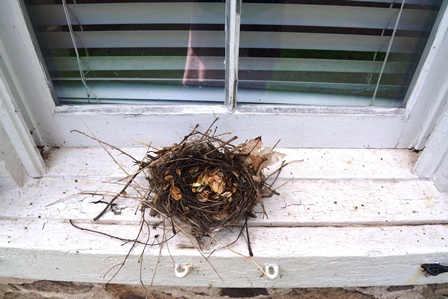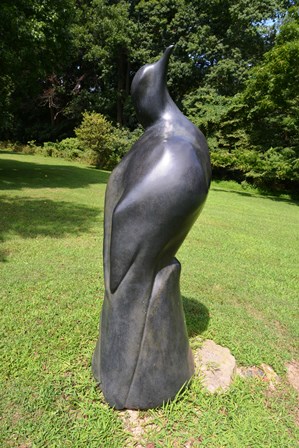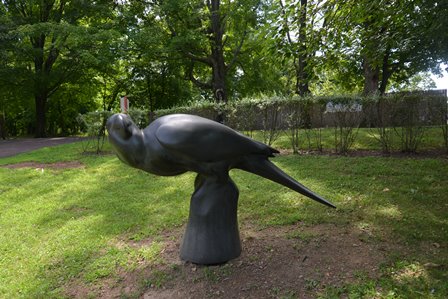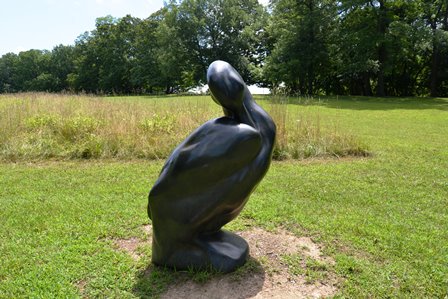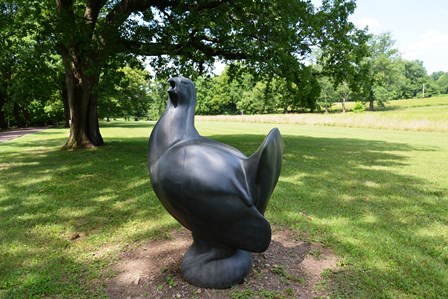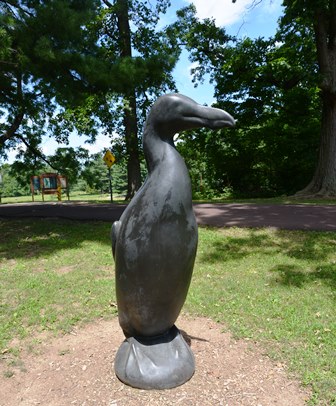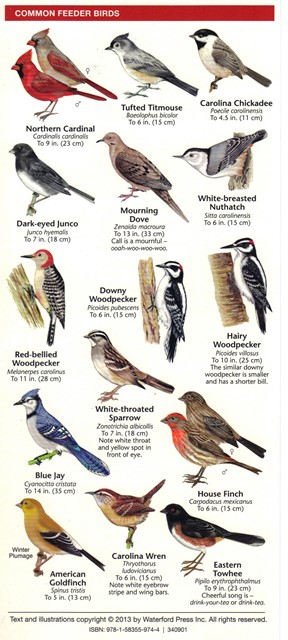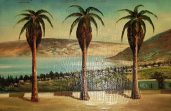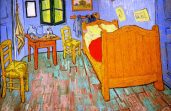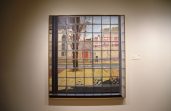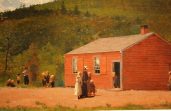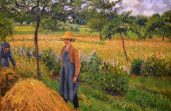The Lost Bird Sculptures
by
Todd McGrain Sculptures
Located in Audubon, Pennsylvania, the John James Audubon Center at Mill Grove, is a National Historic Landmark. An artist and naturalist, Audubon’s home is nestled in a park, with great walking trails where nature can be observed and enjoyed.
Upon entering, the first thing I noticed was a series of sculptures, which I soon learned were all extinct, they were created by Todd McGrain.
The Passenger Pigeon
“The extinction of the Passenger Pigeon had two major causes: commercial exploitation of the pigeon meat on a massive scale and loss of habitat. Pigeons were viewed as a nuisance species, so they were often killed by landowners. Shooting pigeons was also commonplace as a form of recreation. The last bird died in the Cincinnati Zoo on September 1, 1914.”
The Carolina Parakeet
“The Carolina Parakeet was considered a serious agricultural pest and was slaughtered in large numbers by wrathful farmers. Forest destruction throughout the bird’s range and hunting for its bright feathers to be used in the millinery trade also cause the birds to begin declining in the 1800’s. The last captive bird died at the Cincinnati Zoo in the same aviary cage in which the last Passenger Pigeon died nearly four years earlier. By 1939, it was determined that the Carolina Parakeet had become extinct.”
The Labrador Duck
“The extinction of this bird is still not fully explained. Although hunted for food, the Labrador Duck was considered to taste bad. Consequently, it was not sought much by hunters. However, it is thought that the eggs may been over-harvested, and it may have been subject to depredation by the feather trade in its breeding area as well. The last bird was seen in December of 1878.”
The Heath Hen
“Heath Hens were extremely common in their habitat (scrubby coastal areas from southernmost New Hampshire to northern Virginia) curing Colonial times were hunted by settlers extensively for food. By the late 18th century, the Heath Hen had a reputation as poor man’s food for being so cheap and plentiful. By 1870, all Heath Hens were extinct except for about 300 left on the island of Martha’s Vineyard. Despite an effort to preserve these birds from extinction the last Heath Hen was seen in 1932.”
The Great Auk
“The Little Ice Age may have reduced the population of the Great Auk by exposing more of their breeding islands to predation by polar bears, but massive exploitation for their down feathers drastically reduced the population. With its increasing rarity, specimens of the Great Auk and its eggs became collectibles and highly prized by rich Europeans. The loss of large number of its eggs to collection contributed to the demise of the species. The last bird was seen in 1852.”
I have books to identify birds; but flipping through so many pages, can sometimes feel a bit overwhelming, and before I find a bird which looks like the creature at the bird feeder, he is long gone – thus, what I love about this brochure, as it focused on the fellows which at least in Maine, seem to come to dinner, the most often. I hope you too will find it useful.
To see more of John James Audubon’s exquisite work: http://www.audubon.org/birds-of-america
To learn more about the center: http://johnjames.audubon.org/

